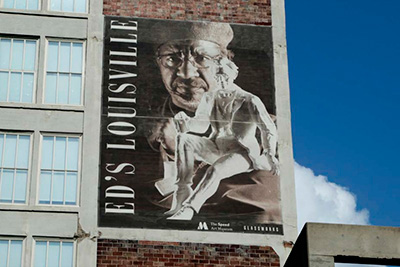“I remember (quite clearly!) being four years old and knowing that I wanted to draw.”
– Henry Martin (1)
In 1972 Jim Geraghty was the Art Editor of The New Yorker. One day each week was “look day” - a group of cartoonists would wait, in turn, outside of his office to pitch cartoons for possible publication in the magazine. They were under contract to The New Yorker, which means Geraghty had the first shot at any new ideas. Henry Martin was one of those artists, bringing about 20 fresh ideas as pencil roughs, but perhaps 10 as finished ink drawings. In a 1972 interview with Cartoonist PROfiles, Martin remembers: “When I began to do magazine cartoons, I didn’t feel competent enough in the drawing department, and I thought that if drew the cartoons up as best I could – every single one – that over the years I’d get to be a better artist.”(2) Whatever Geraghty passed on could then be offered to The Saturday Evening Post, Punch, Better Homes and Gardens, and Ladies Home Journal, but Martin was published often in The New Yorker.
Henry Martin in 1972. Photo by Jim Ruth.
Martin was born in Louisville in 1925, the year that the Art Center Association (now Louisville Visual Art) began its Children’s Fine Art Classes. In the 1930’s, young Henry was enrolled for some time in those classes before the family relocated to Dallas, where he graduated from what is now St. Mark’s School of Texas. He attended Princeton University, graduating in 1948 with a degree in Art History. Later he studied art at the American Academy of Art in Chicago.
His daughter, Ann M. Martin, is the author of the hugely popular "Baby-Sitter’s Club" books for young readers, which she published for more than 30 years. “My father was a self-employed artist who rented a little studio in Princeton, New Jersey, where he went every day for many years to create cartoons and illustrations to sell to magazines and other publications. His work ethic, along with his entrepreneurial spirit and determination to succeed in his chosen profession, made a lasting impact on me and my own career choices.” (1)
In an interview for Scholastic conducted by his daughter in 2014, Martin remembered his early days living in Princeton, New Jersey: “I supported my family by selling cartoons and illustrations to various magazines and taking on odd jobs (for example, painting a mural on the wall of a local store!). I was regularly selling small spot drawings to The New Yorker magazine, but I had a greater goal in mind, and that was to publish cartoons in The New Yorker. I'd been a dedicated reader of The New Yorker since I was a young boy, and I knew that getting published in this magazine was considered to be the pinnacle of anyone's cartooning career.
To help achieve this goal, I challenged myself to submit twenty cartoons a week, every week, to The New Yorker. I did this without fail for four years, and every single cartoon was turned down.
And then one day it finally happened – The New Yorker accepted one of my cartoons.” (1)
The art of the single frame cartoon is deceptive. One image and a scant few words communicating a joke with nearly universal understanding can seem so simple, but try it sometime. Martin’s style was classic, clean and uncluttered, establishing location and context with economy. The cartoons are populated by the kind of white, Everyman characters that exemplify the mid-20th century American aesthetic. Martin’s people are self-satisfied but almost never smug, filled with the confidence of freedom reinforced by a post-World War II society. The humor is dry, affectionately satirical, a tone that would eventually be replaced by the more off-kilter intellectual sensibility of cartoonists such as Gary Larson, and a shift Martin anticipated in the 1972 interview: “I really believe that there will be a wedding of the purely humorous, and the brainy, in cartoons of the future.” (2)
In 1998, Martin and his wife moved to Pennswood Village, a continuing care retirement community in Newtown, Pa. For many years he contributed cartoons to the community newsletter, making his subjects the concerns of the residents: medicines, idleness, and the rueful, bemused perspective that can seem a natural by-product of longevity.
(1) Scholastic.com, Letters from Ann, An Interview With My Father, Cartoonist Henry Martin
(2) Cartoonist PROfiles #14, June 1972, Interview with Henry Martin
Written by Keith Waits.
In addition to his work at LVA, Keith is also the Managing Editor of a website, www.Arts-Louisville.com, which covers local visual arts, theatre, and music in Louisville. Entire contents copyright © 2017 Louisville Visual Art. All rights reserved. Cartoons from The New Yorker published under license from © 2017 Conde Nast.





































![“Little Bird” by Britany Baker, 8x8in, oil on canvas (2016) NFS - Sold at last years art[squared] event.](https://images.squarespace-cdn.com/content/v1/54ef4d4ee4b002862ddb9057/1490196959483-STHMI1AWPIBI9YCB546Z/image-asset.jpeg)











